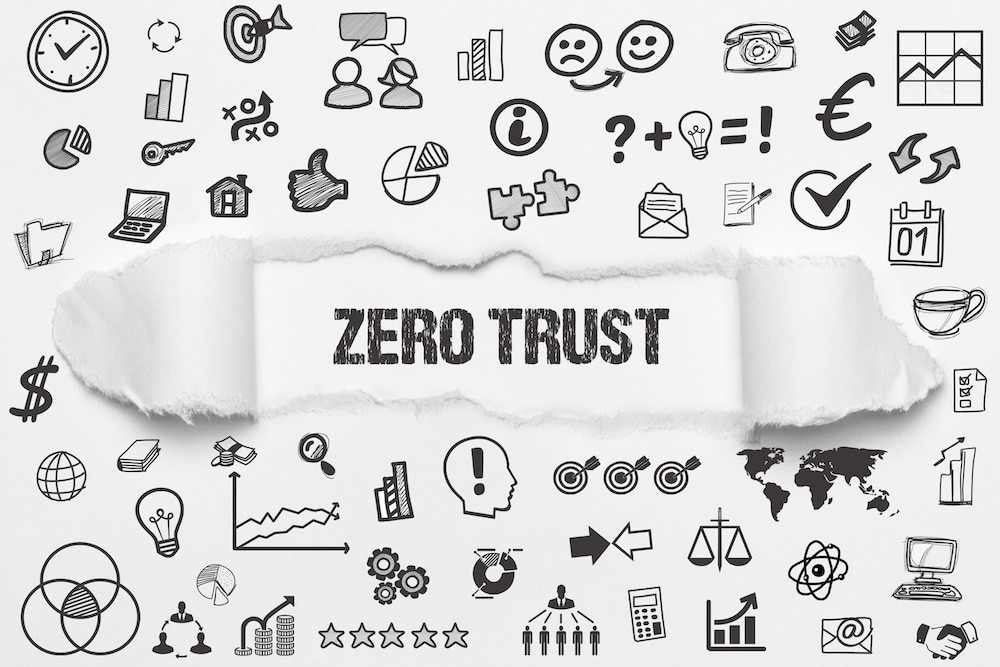Is Zero Trust just another buzz word for cybersecurity?
Zero Trust is one of the hottest cybersecurity buzzwords out there these days. So what exactly created the buzz behind this cyber term, and is it just a passing fad?
First, let’s define what zero trust is…
What Is Zero Trust?
Zero trust is a cybersecurity term that refers to a specific security solution, designed as a complete security framework.
John Kindervag, a Forrester research analyst, was the person who coined the phrase. The term zero trust became more popular when he introduced the idea that an organization should create safe cybersecurity models – and not trust anyone inside or outside the organization’s perimeters.
This new framework uses zero trust encryption. It requires that all users of an organization’s network be authenticated and authorized. It continuously monitors the connection for the best security configuration possible. It provides trust and security for accessing an organization’s data and applications.
Is Zero Trust The Future of Cybersecurity?
Zero Trust is more than just a hot term. It’s really a complete cyber mindset.
The zero trust security model tightens up any existing weak points in an organization’s perimeter. Zero trust is a cybersecurity architecture that protects access for users, their devices, and systems. This allows an organization to easily isolate cyber traffic until a proper level of trust is established.
These days, companies are being overwhelmed by messages from IT vendors offering Zero Trust solutions. But, is this access model and level of security needed? Is it a passing trend, or is it here to stay?
The reality is that zero trust is here to stay, and completely necessary for protection.
When COVID-19 hit, companies soon realized that they needed to quickly modernize their cyber infrastructure. Some companies improved their existing remote access framework by adding licenses and capacity. What was really needed was a completely new approach.
Facts on cybersecurity:
- Hybrid working is here to stay, and companies need to protect this – by creating a user-friendly experience that is both safe and accessible.
- Cyberattacks have not gone down, in fact, the numbers of cyberattacks continue to rise
- Outsourcing proper IT security is in high demand, and absolutely needed for the safe access of a company
- Educating employees on Zero Trust is key to success and safety
Zero Trust Challenges
There are many challenges with implementing a trust and verify system. Utilizing an IT company with zero trust certification will give you the opportunity for guidance from experts.
An organization needs assistance to provide a proper model for zero trust identity and access management and best practices.
Zero trust best practices include:
- Improving employee experience and reducing difficult operations
- Create clear trust systems with cyber visibility
- Tighter security around the increase in remote security issues
This required model for security creates a huge amount of work and responsibility for an organization’s IT department – and not all smaller companies have their own IT department.
That’s where ETS comes into play. When a company’s traditional security models aren’t working, ETS sharpens your security with trust models that create a safe zero trust situation.
When a company has employees working partly from home, the highest trust model safety must be implemented. A network must assume that it is at risk at all times from internal and external threats.
The Zero Trust Way
Zero trust is not just a buzzword. Zero trust is a cyber security best practice for all new and existing companies. Zero trust vendors can ensure that the proper individuals are accessing your organization’s resources safely.
Our government has placed high weight on user trust networks, too. The Biden Administration’s updated its cybersecurity strategy for federal agencies and executive departments with an executive order on improving our country’s security.
This strategy builds a trust network architecture for company defense against “increasingly sophisticated cyber threats.”.
How to implement zero trust:
- Hire an IT firm like ETS to create a cybersecurity architecture diagram for you – for complete protection. They understand trust tech, and they can set up a protection model with zero trust implementation that works for you.
- Provide secure trusted cloud principles with a multi-factor authentication network for top-notch, zero trust security.
- Create a user-friendly system that gives users quick access to the needed systems and applications that they will utilize – in and out of the office.
- Educate staff and users on zero authentication and best practices to reduce risky security behavior. Give them a streamlined system that implements an easier sign-on system with no-click access for use of cloud apps.
Network security models with zero trust segmentation of data centers and cloud environments can strengthen your security while being compliant with current regulations. This can minimize potential data breaches.
ETS And Zero Trust Assessment
With guidance from ETS, you will be able to maintain a zero trust security system by building a cyber architecture that is right for your organization.
Together, we can help you embrace network security architectures that protect the integrity of your company, as well as secure your data and access for your employers and users. They entrust you with personal info and deserve to be safe.
A solid IT framework from ETS will get you to a place of zero trust and security excellence.

